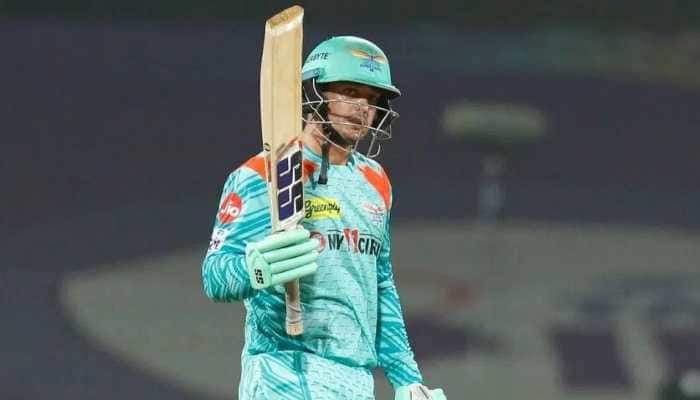Ayodhya case Day 31 hearing: Sunni Waqf Board refuses to accept Ram chabutra as birth place of Lord Ram
The 31st day of hearing in the Ayodhya case concluded in Supreme Court on Wednesday before a Constitution Bench of Chief Justice of India Ranjan Gogoi and Justices SA Bobde, DY Chandrachud, Ashok Bhushan and Abdul Nazeer.
Trending Photos
)
The 31st day of hearing in the Ayodhya case concluded in Supreme Court on Wednesday before a Constitution Bench of Chief Justice of India Ranjan Gogoi and Justices SA Bobde, DY Chandrachud, Ashok Bhushan and Abdul Nazeer.
The hearings, in this case, started on August 6, with arguments being made on behalf of the Nirmohi Akhara. In the following hearings, submissions were made before the SC bench on behalf of the deity Ram Lalla and the Ram Janmabhoomi Punaruddhar Samiti. The Muslim parties started their arguments in this case after the conclusion of arguments on behalf of the Hindu parties. This week, the hearings in Ayodha case will continue till Thursday.
Here are the highlights of Ayodhya case Day 31 (September 25) hearing:
- Sunni Waqf Board lawyer Zafaryab Jilani started the arguments and said that the Sunni Waqf Board does not accept that Ram chabutra is birth place of Lord Ram. "Our stance is that it is their belief and we are not taking any steps in that regard after an observation to that effect by a District Judge", he said.
- Jilani argued that no gazetteers show that Hindus used to worship in the disputed structure. Referring to Report of 1862, Jilani said that another temple is actually the Janmasthan temple. He added that Ramkot fort has a place called Janmasthan which is described as birth place of Lord Ram.
- Jilani then referred to document as per which a place called Ram Chabutra is being worshipped as place where Lord Ram was born. Justice Bobde told Jilani that this is in line with what was accepted by him on Tuesday but Jilani made a U-turn and said that this is their (Hindus') belief.
- When Justice Ashok Bhushan quizzed Jilani on the oral evidence regarding janmasthan being at the disputed site, he said, "Your Lordships should not pick one or two lines from 100s of pages of testimonies but should examine the testimony as a whole."
- Jilani argued before the SC bench that this belief that place of birth was below the middle dome was not there till 1989 and this claim was not made in any suits filed from 1950 to 1989. Jilani then concluded his arguments.
- After the conclusion of Jilani's arguments, senior Advocate Meenakshi Arora started arguments and dealt with the ASI report.
- She told the SC bench that when Mahant Raghubar Das filed suit for construction of temple, he wanted it to be built at Ram Chabutra and not at the spot where mosque was.
- Arora told the SC bench that if in 1863, a court denied permission to build temple on the ground that it is wise not to alter status quo after 350 years, then can the honourable court, 500 years later, allow claim to title based on oral evidence and gazetteers etc.
- Arora argued that archeology is more in the nature of social science and is different from Physics, Chemistry etc. She added that technology like carbon dating can be used but it has not been done.
- Justice Bobde then asked Arora that if something is vague and not exact, then it cannot be called a science, Arora responded saying Archeology is not natural science like Physics, Chemistry, so it is not precise. Archeology does not provide a verifiable conclusion. Archeologist makes an inference, Meenakshi Arora, she noted.
- Arora argued before the SC bench that even if ASI report is considered expert evidence, it should be tested on the plank of Section 45 of Evidence Act.
- Arora claimed that ASI report is an opinion and the SC should treat it on that basis. She added that ASI report has no chapter on bones, which is quite unusual.
- Arora claimed that the High Court puts Tojo Vikas report and ASI report together to arrive at its conclusion which could not have been done. She added that the ASI report failed to conclude that any structure was demolished to build the mosque.
- Arora noted that if ASI failed to show that there was demolition and a mosque was constructed on the same place where there was no demolition, then what is the basis of the suit by Hindu parties.
- Justice DY Chandrachud asked Arora whether it was neceesary to establish that demolition was done and it is not sufficient to show that there was a structure underneath the mosque.
- Arora stressed that Hindu parties need to show some evidence about the existence of temple. Their evidence is a traveller's writing of 17th century which cannot be relied upon.
- Justice SA Bobde says that demolition can be inferred and Arora responded that inferences are conversely too and it is necessary to balance the inferences.
- Arora said that demolition has not come in the ASI report and the summary of ASI report has not been attributed to or signed by any member of the ASI team.
- Justice Bobde asked Arora that whether she meant that somebody else interpolated the summary to the report? Arora said that she did not mean that.
- Justice DY Chandrachud said that why no objection was raiased by requesting permission to examine ASI team when matter was in High Court. Arora responded that the issues raised before the HC but the HC did not consider it.
- Justice Chandrachud said that the objection to ASI report's summary was not taken as per CPC. When Justice Nazeer asked Arora that you have accepted the ASI report, she said not at all.
- Justice Bobde said that Demolition of temple can only be inferred and need not be proved but Arora argued that some material evidence should be there to support that inference.
- You are asking us to sit in judgment over something which should have been decided at trial stage. You had your remedies which you did not avail. All that you say today should have been told to Commissioner: CJI Ranjan Gogoi to Meenakshi Arora.
-Arora said that there are palpable, apparent inconsistencies in ASI report. CJI Gogoi said that none of these objections were raised by Arora in the suit. Arora ended the argument by saying, "I have My Lord"".
Stay informed on all the latest news, real-time breaking news updates, and follow all the important headlines in india news and world News on Zee News.
Live Tv






)
)
)
)
)
)
)
)
)
)
